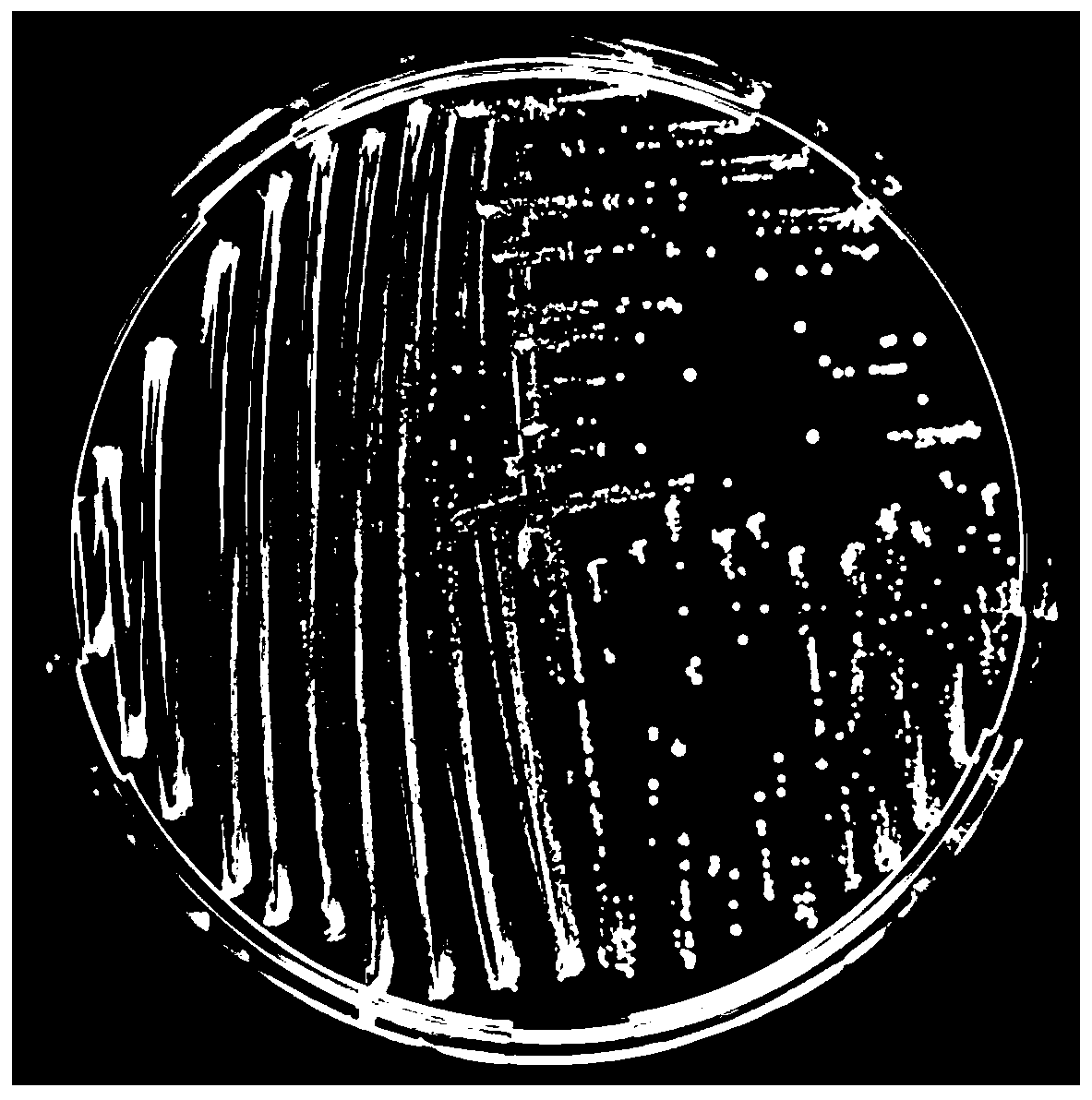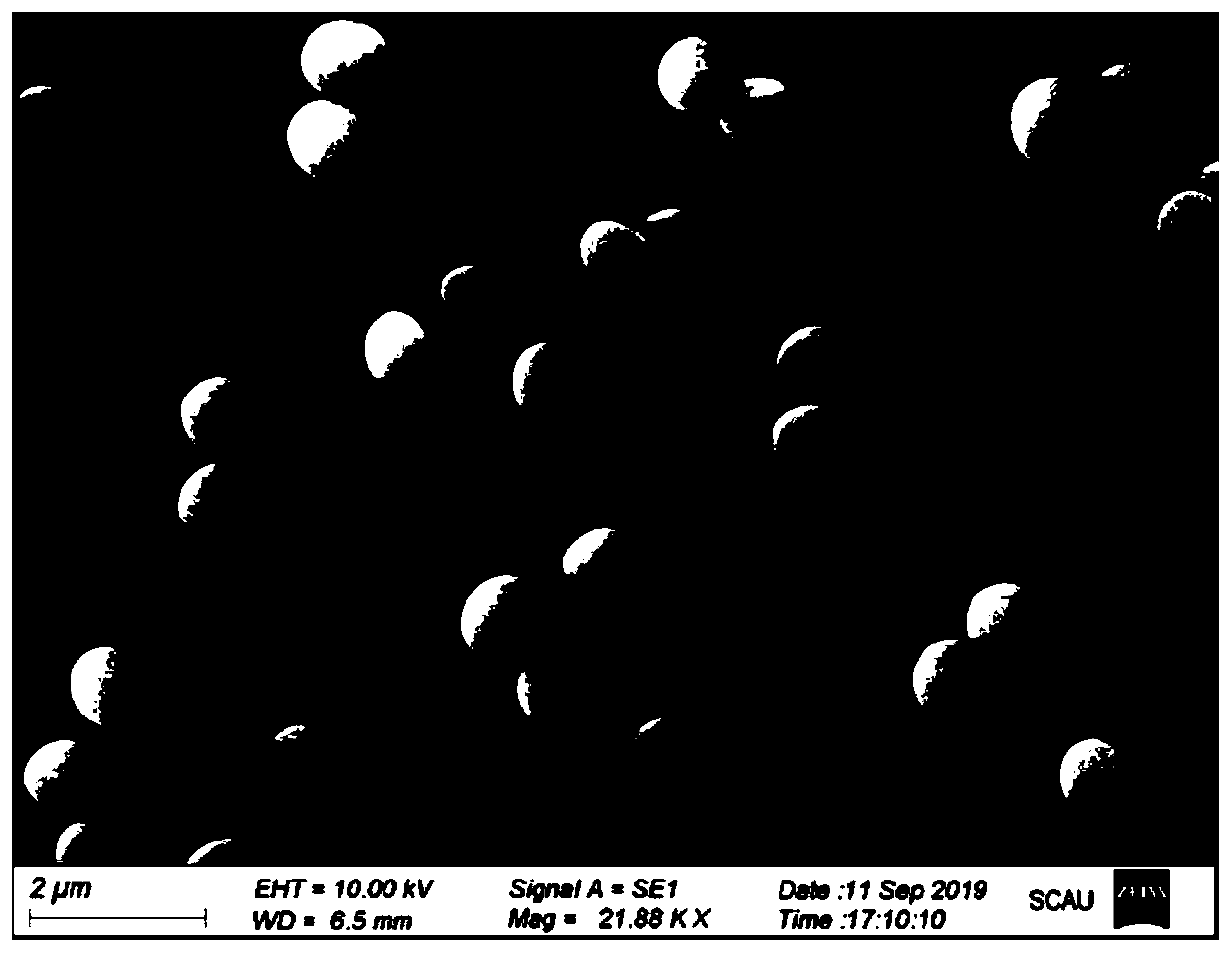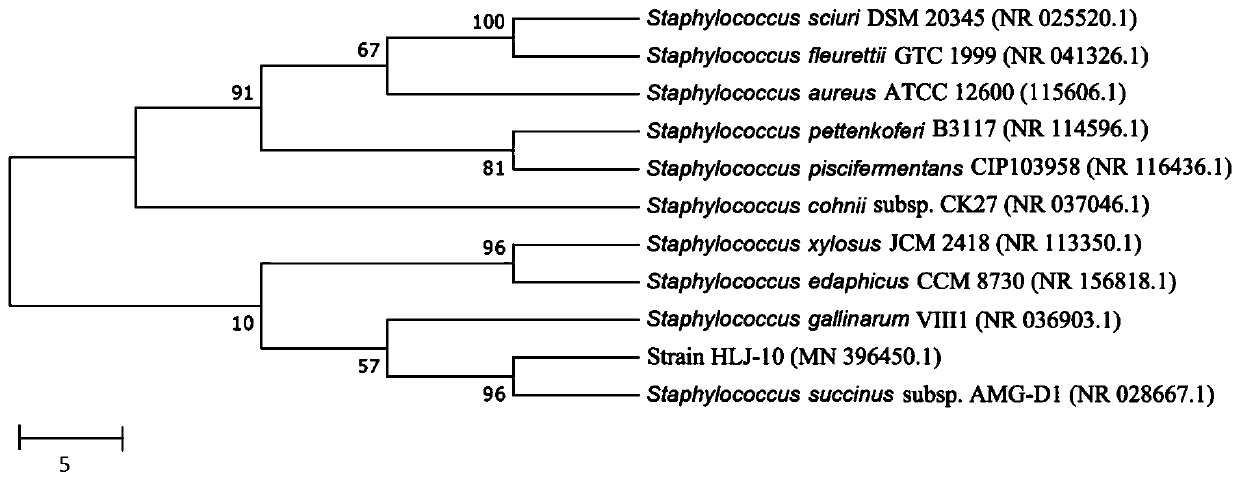Degradation bacterium for pyrethroid insecticides and application thereof
A technology of pyrethroids and pesticides, which is applied in the field of degrading bacteria of pyrethroids, can solve problems such as microorganisms that have not been studied for degrading dextrofenothrin, and achieve a rich germplasm resource pool. , the effect of significant application value
- Summary
- Abstract
- Description
- Claims
- Application Information
AI Technical Summary
Problems solved by technology
Method used
Image
Examples
Embodiment 1
[0043] The separation and identification of embodiment 1 degrading bacteria
[0044] 1. Screening and isolation of d-cyphenothrin-degrading strains:
[0045] Collect activated sludge from a farmland located in Harbin City, Heilongjiang Province. After fully mixing, weigh 5g of activated sludge sample and add it to a 250mL Erlenmeyer flask containing 50mL liquid MSM medium, add d-cyphenothrin The mother liquor makes its final concentration 50mg / L. After culturing at 30°C and 200rpm for 7 days, increase the pesticide mass concentration from 50mg / L to 100mg / L according to 10% inoculum each time, and increase to 200mg / L, 400mg / L and 800mg / L in the same way . Then 800 mg / L culture solution was serially diluted and spread on the MSM solid plate containing 50 mg / L d-cyphenothrin, and cultured upside down at 30° C. for 3 days. After a single colony grows on the plate, pick a single colony and streak it on the LB plate for purification three times, and obtain a high-efficiency degra...
Embodiment 2
[0057] Example 2 Degradation Effect Experiment of Bacterial Strain HLJ-10 on D-cyphenothrin
[0058] 1. Experimental method
[0059] (1) Preparation of seed liquid: insert the purified strain HLJ-10 into LB liquid medium containing 5 mL and activate it overnight to the logarithmic phase. The second time, the obtained bacteria were used as the inoculum.
[0060] (2)Determination of degradation performance: according to the OD of the bacterial solution 600 The bacterium with a value of 0.8 was inoculated into 50 mL of MSM culture solution containing dex-cyphenothrin (50 mg / L), and no inoculation was used as the control, and each group was repeated three times. Incubate at 30°C and 200rpm constant temperature shaker for 7 days, take samples every 1d, measure the growth of strain HLJ-10, and use high performance liquid chromatography (HPLC) to measure its degradation of d-cyphenothrin.
[0061] (3) Chromatographic conditions:
[0062] HPLC: Type 2690 (Waters, USA)
[0063] Co...
Embodiment 3
[0078] Example 3 Optimum Degradation Conditions of D-cyphenothrin by Bacterial Strain HLJ-10
[0079] 1. Experimental method
[0080] The HLJ-10 strain was subjected to a single-factor degradation test, and the degradation rate of the HLJ-10 strain was determined by sequentially changing the factors affecting growth and degradation, such as temperature, pH value, inoculation amount, pesticide concentration, and oscillation rate, to determine the impact of the strain HLJ. -10 key factors for degradation rate.
[0081] Utilize Design Expert 12.0 software to carry out experimental design (table 3) according to the principle of response surface method Box-Behnken design, to influence the key factor temperature (X 1 ), pH value (X 2 ) and inoculation volume (X 3 ) is the independent variable, and the residual amount of d-cyphenothrin is the response value (Y 1 ), to establish a multiple quadratic regression equation.
[0082] According to the multiple quadratic regression equa...
PUM
 Login to View More
Login to View More Abstract
Description
Claims
Application Information
 Login to View More
Login to View More - R&D
- Intellectual Property
- Life Sciences
- Materials
- Tech Scout
- Unparalleled Data Quality
- Higher Quality Content
- 60% Fewer Hallucinations
Browse by: Latest US Patents, China's latest patents, Technical Efficacy Thesaurus, Application Domain, Technology Topic, Popular Technical Reports.
© 2025 PatSnap. All rights reserved.Legal|Privacy policy|Modern Slavery Act Transparency Statement|Sitemap|About US| Contact US: help@patsnap.com



